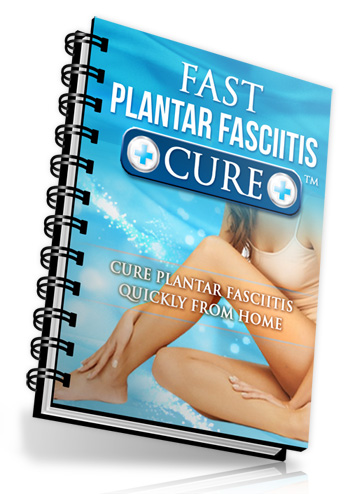Plantar Fasciitis is extremely painful
 One of the most debilitating and painful disorders of the foot, which if
left untreated can seriously detract from one’s quality of life, is
known as Plantar Fasciitis.
One of the most debilitating and painful disorders of the foot, which if
left untreated can seriously detract from one’s quality of life, is
known as Plantar Fasciitis.
This repetitive stress injury affects nearly one out of every ten people worldwide. The pain that characterizes this condition is local to the calf, foot and particularly the heel. The tissue that is directly damaged from the disorder is called the plantar fascia. It is a skinny piece of tissue that protects the many other tissues within your foot from incurring damage.
One of the best resources covering effective treatment of this health issue is the Fast Plantar Fasciitis Cure™ eBook. This extremely in-depth treatment plan was drafted by author Jeremy Roberts who is an expert in the field of exercise rehabilitation. The numerous stretches, behavioral changes, and recommended dietary supplements found within the book are all aimed at relieving the intense pressure caused by Plantar Fasciitis. The main idea is to strengthen the tissue surrounding the plantar fascia, which in turn helps to quickly heal the affected tissue.
The eBook first goes into what causes the condition and details the biomechanics related to Plantar Fasciitis, as well as the varying risk factors associated with the condition. It may shock you to find out that everything from high-arched feet to weight gain to bone spurs can be directly correlated to a Planar Fasciitis diagnosis. The book then details the many forms of treatment available for the condition. The presented treatment strategies are a lot less expensive than traditional prescriptions or suggested treatments from a doctor. Simply put, this is an incredibly valuable guide to living with and treating Plantar Fasciitis. In fact, if you are not fully satisfied with the results gained from this book, you have a money back guarantee.
This digital download is truly convenient - you are able to view it on your laptop, computer, smartphone, tablet as well as many other devices. Without a doubt you will be on your way to quickly healing your foot when you Download Fast Plantar Fasciitis Cure™.
feel free to check plantar fasciitis causes and solutions
hey just wanted to share a pretty compelling and somewhat schocking video we recently found,related to Plantar fasciitis cure we've heard many positive results from folks who have done it ,but at the same time the medical community may not be ready for this yet,as it is very new feel free to check out the video and contact us or leave a comment to let us know your thoughts
 One of the most debilitating and painful disorders of the foot, which if
left untreated can seriously detract from one’s quality of life, is
known as Plantar Fasciitis.
One of the most debilitating and painful disorders of the foot, which if
left untreated can seriously detract from one’s quality of life, is
known as Plantar Fasciitis.This repetitive stress injury affects nearly one out of every ten people worldwide. The pain that characterizes this condition is local to the calf, foot and particularly the heel. The tissue that is directly damaged from the disorder is called the plantar fascia. It is a skinny piece of tissue that protects the many other tissues within your foot from incurring damage.
One of the best resources covering effective treatment of this health issue is the Fast Plantar Fasciitis Cure™ eBook. This extremely in-depth treatment plan was drafted by author Jeremy Roberts who is an expert in the field of exercise rehabilitation. The numerous stretches, behavioral changes, and recommended dietary supplements found within the book are all aimed at relieving the intense pressure caused by Plantar Fasciitis. The main idea is to strengthen the tissue surrounding the plantar fascia, which in turn helps to quickly heal the affected tissue.
The eBook first goes into what causes the condition and details the biomechanics related to Plantar Fasciitis, as well as the varying risk factors associated with the condition. It may shock you to find out that everything from high-arched feet to weight gain to bone spurs can be directly correlated to a Planar Fasciitis diagnosis. The book then details the many forms of treatment available for the condition. The presented treatment strategies are a lot less expensive than traditional prescriptions or suggested treatments from a doctor. Simply put, this is an incredibly valuable guide to living with and treating Plantar Fasciitis. In fact, if you are not fully satisfied with the results gained from this book, you have a money back guarantee.
This digital download is truly convenient - you are able to view it on your laptop, computer, smartphone, tablet as well as many other devices. Without a doubt you will be on your way to quickly healing your foot when you Download Fast Plantar Fasciitis Cure™.
feel free to check plantar fasciitis causes and solutions
hey just wanted to share a pretty compelling and somewhat schocking video we recently found,related to Plantar fasciitis cure we've heard many positive results from folks who have done it ,but at the same time the medical community may not be ready for this yet,as it is very new feel free to check out the video and contact us or leave a comment to let us know your thoughts



